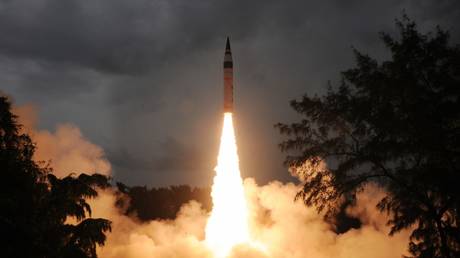
The indigenously developed long-range surface-to-air missile is reportedly designed to be part of a “layered defense network”
Seoul tested a new missile defense system it has developed, capable of intercepting a range of airborne weapons, on Wednesday, the South Korean news agency Yonhap reported.
The outlet stated that the long-range surface-to-air missile (L-SAM) was successfully launched from a testing site in Taean, 150 km (90 miles) southwest of the capital Seoul. The Defense Ministry is yet to comment on the reports.
According to plans cited by Yonhap, the system aims to target incoming projectiles at altitudes of around 50-60 kilometers (30-37 miles). Seoul intends for the system to be operational by 2026, but the paper reported that its deployment date could be brought forward.
The L-SAM is a “cutting-edge indigenous weapon system,” according to South Korea’s Agency for Defense Development, and is designed to be part of a “layered defense network.”
The system, which is still in development, would be deployed alongside existing hardware, including US-made Patriot Advanced Capability-3 missiles and locally produced Cheongung II KM-SAM medium-range projectiles.
South Korea also hosts US military Terminal High Altitude Area Defense (THAAD) anti-missile batteries. One of the country’s presidential hopefuls has vowed to purchase a THAAD interceptor battery to deploy nearer to Seoul.
Seoul also has plans to create a $2.6 billion artillery interception system, similar to Israel’s ‘Iron Dome’.
Wednesday’s trial comes a month after North Korea tested a record number of increasingly capable warheads. Fired projectiles included the Hwasong-12 intermediate-range ballistic missile, which is believed to be capable of striking the US territory of Guam.




